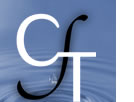 |
||||||||||
Cooperative Learning
"Cooperative learning" is a type of active learning that involves groups of three or more students working together on a task.
Cooperative Learning: Students Working in Small Groups, from the Stanford University Newsletter on Teaching, is an excellent introduction to this pedagogical practice.
Cooperative Learning:
Increasing College Faculty Instructional Productivity is an article by
David W. Johnson, Roger T. Johnson, and Karl A. Smith that explains the benefits of cooperative learning:
Cooperative learning is the instructional use of small groups so that students work together to maximize their own and each other's learning. Considerable research demonstrates that cooperative learning produces higher achievement, more positive relationships among students, and healthier psychological adjustment than do competitive or individualistic experiences.
Collaborative Learning from the National Institute for Science Education explains the value of collaborative learning or "small group learning" in science, math, and technology courses.
Changing a Course from Lecture Format to Cooperative Learning, by Dean McManus at the University of Washington, provides a case study on transforming a traditional lecture course into a class based on cooperative learning:
For the students, change began on the first day. They learned that they would be expected to discuss the assigned reading and to teach it to other students. Furthermore, they would be writing one-page and two-page summaries of readings often, and five-page reports every couple of weeks. The emphasis would be on their ability to express themselves in terms of the science they were studying.
Navigating the Bumpy Road to Student-Centered Instruction, by professors Richard Felder and Rebecca Brent, addresses the resistance that teachers may have about using collaborative or cooperative learning. They argue:
In short, we are convinced that the benefits of properly implemented student-centered instruction more than compensate for any difficulties that may be encountered when implementing it. Instructors who follow recommended SCI procedures when designing their courses, who are prepared for initially negative student reactions, and who have the patience and the confidence to wait out these reactions, will reap their rewards in more and deeper student learning and more positive student attitudes toward their subjects and toward themselves. It may take an effort to get there, but it is an effort well worth making.
Effective Strategies for Cooperative Learning, also by Felder and Brent, is another good resource.
Groups, a useful description of how to form and manage student groups, is on the National Institute for Science Education web site. The information here applies to many disciplines, although it's intended for science faculty.
Working in Groups, from Harvard University, provides hand-outs for faculty and students on working in groups.
The Center for Teaching Library includes a variety of books and videotapes on cooperative learning. Some of the most helpful are:
- Barkley, Cross and Major, Collaborative Learning Techniques: A Handbook for College Faculty
- Angelo and Cross, Classroom Assessment Techniques
- Bean, Engaging Ideas
- Bruffee, Collaborative Learning
Designing Effective Group Activities, from the University of Oklahoma, provides the following advice:
The primary objective of this article is to provide readers with guidance for designing effective group assignments and activities for classes and workshops. In doing so, we examine the forces that foster social loafing (uneven participation) in learning groups and identify four key variables that must be managed in order to create a group environment that is conducive for broad-based member participation and learning. We then discuss the impact of various types of activities and assignments on learning and group cohesiveness. Finally, we present a checklist that has been designed to evaluate the effectiveness of group assignments in a wide variety of instructional settings and subject areas.
Team-Based Learning (TBL) - This well-developed teaching method is similar to JiTT in that it involves leveraging pre-class student assignments. One core idea is that class time is spent having students work through problems or case studies in permanent teams, usually consisting of six students each. Students respond to questions about the problems or case studies individually, then respond to the same questions as a team. Student grades depend on both their individual performance on these quizzes as well as their team performance, providing incentives for students to engage with the material on their own as well as with their team. Class discussions are fueled by this individual and team work.
For more information on TBL, see the University of British Columbia's TBL site or this 12-minute video on TBL from the University of Texas.
HOME | ABOUT CFT | PROGRAMS | SERVICES | RESOURCES
Center for Teaching |
General Questions? Web Site Questions? Copyright ©2009 |
